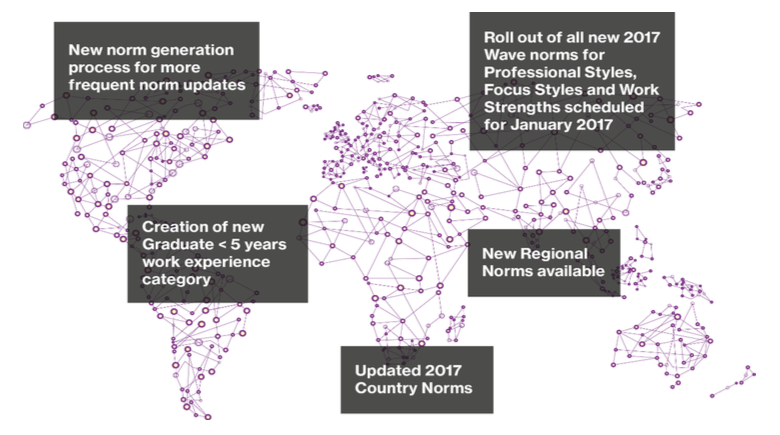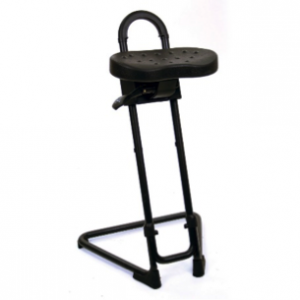
Wave 2017: New Norms. New Reports. Greater Efficacy.
January 17, 2017
Pelocity and Wounded Warrior Project Jump Start Veterans’ Career Search
May 11, 2017What Do You Know About Ergonomics?
By guest blogger Dr. Divya Desai (CEAS, OTD, OTR/L)
Ergonomics is a science driven profession that attempts to maximize human performance while minimizing risk for injuries. The goal of an ergonomic intervention is to modify work to meet the needs of the worker – not the other way around. For instance, when a worker has a desk too high for his height, he may accommodate by raising his shoulders a bit. However, doing this day after day, for year may result in neck and upper back discomfort. The ergonomic intervention for this person would include lowering the desk or increasing the height of the chair (in addition to other modifications). When the work is adjusted to meet the workers’ needs, they are less likely to have aches, pains, discomfort or injury.
It is a common notion that ergonomics involves fitting a new office chair, but it is much more than that. There are many factors that influence how you sit at work and function: the type of keyboard-mouse, lighting or glare, your clothing and accessories, your lifestyle (sedentary or active). Ergonomics takes in to account these factors and suggests modifications based on expected final outcome, which may be to decrease discomfort, increase productivity, save on worker’s compensation premiums or all the above!
 Essentially, all industries can and should incorporate ergonomics in their routine. For example, a hair stylist can use an anti-fatigue mat or adjustable sit-stand stool (pictured) and tools designed to promote efficient grasp and decrease hand pain.
Essentially, all industries can and should incorporate ergonomics in their routine. For example, a hair stylist can use an anti-fatigue mat or adjustable sit-stand stool (pictured) and tools designed to promote efficient grasp and decrease hand pain.
On the other hand, an office worker may benefit from a foot rest to improve posture or have a document holder to minimize the repetitive motion of looking down at the document and up at the screen. In nutshell, ergonomics cannot have a cookie-cutter approach and is customized to meet individual needs.
Ergonomic Risk Factors
Some risk factors increase the likelihood of ergonomic injuries, also known as work-related musculoskeletal disorders. Ergonomic injuries can include back, neck, or shoulder pain, carpal tunnel syndrome or other symptoms, like numbness in the arms or legs and swelling in the legs. These risk factors are as follows:
- Awkward sustained posture (e.g. a dentist leaning over to examine your teeth)
- Vibration
- Exerting excessive force (e.g. during pushing or pulling of objects)
- Localized pressure (e.g. forearm resting against sharp edge of your desk)
- Exposure to excessive heat or cold
- Combination of two or more factors listed above
How does Ergonomics help?
Ergonomic intervention will help you identify the risk factors in your work environment. Some risk factors are related to the person; for example, your tendency to lean forward when working or not taking breaks to stretch. Some consultants, like those at Pro Ergonomic Consultants, promote positive lifestyle changes geared at changing personal habits to decrease the risk. Interventions may include teaching stretching exercises or safe lifting techniques, providing resources that help you to remember to take a break and stretch, or educating on the risk factors specific to you – and how to alleviate them.
There are factors in the environment that can also be modified. Adjusting the height of your chair can improve posture, adjusting the height of a conveyor belt can reduce the amount of bending required to perform a task, and incorporating a “standing” meeting into your schedule can promote movement. Eye strain can be reduced by adjusting the tilt of your monitor to reduce glare and testing your eye dominance (yes, that’s a thing!) can better position your primary and secondary monitors appropriately.
Is Ergonomic intervention expensive?
Not necessarily. Sometimes, all it takes is a personal commitment to exercise daily, and sometimes it means using an ergonomic keyboard (which you can get for as little as $40). An ergonomic consultant can help you identify your risk factors and work with your budget to get the most out of your investment. It is worth noting that the cost of carpal tunnel syndrome surgery will be a lot more expensive than getting an ergonomic chair and keyboard! A recent study published by California Workers Compensation Institute (2017) reported that 60% of workers’ spinal fusions were reported initially as strains. If ergonomic intervention is implemented at the onset of these issues, it can save your business from very expensive medical costs. The OSHA website gives an estimated cost of an ergonomic injury and additional sales required to offset that cost. The 1- and 3-year ROI and payback period can be determined with this Cornell University Ergonomic ROI Estimator.
So how many ergonomic risk factors can you identify in your workplace? What are you doing to alleviate those factors?
Ref: http://www.claimsjournal.com/news/west/2017/03/27/277600.htm
 Dr. Divya Desai (CEAS, OTD, OTR/L) is an occupational therapist, certified Ergonomic Assessment Specialist and president of Pro Ergonomic Consultants. Please feel free to contact her with any questions related to ergonomics or Pro Ergonomic Consultants’ services, or connect via Facebook, LinkedIn and Twitter.
Dr. Divya Desai (CEAS, OTD, OTR/L) is an occupational therapist, certified Ergonomic Assessment Specialist and president of Pro Ergonomic Consultants. Please feel free to contact her with any questions related to ergonomics or Pro Ergonomic Consultants’ services, or connect via Facebook, LinkedIn and Twitter.

